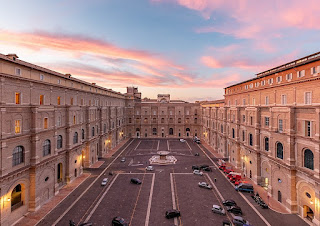Roberto Calvi – banker
Mystery remains over bizarre death of bank chairman
Roberto Calvi, dubbed 'God’s Banker' by the press because of his close association with the Vatican, was born on this day in 1920 in Milan. In 1982 his body was found hanging from scaffolding beneath Blackfriars Bridge close to London’s financial district. His death is a mystery that has never been satisfactorily solved and it has been made the subject of many books and films. Calvi was the chairman of Banco Ambrosiano in Milan, which had direct links to Pope John Paul II through his bodyguard, Archbishop Paul Marcinkus, who was also head of the Vatican Bank, which had shares in Ambrosiano. Calvi had been missing for nine days before his body was found by a passer-by in London. At first police treated his death as suicide but a year later a second inquest overturned this and delivered an open verdict. In October 2002, forensic experts commissioned by an Italian court finally concluded Calvi had been murdered. Calvi had become chairman of Ambrosiano, Italy’s largest private bank, in 1975 and had built up a vast financial empire. But three years later the Bank of Italy issued a report claiming Ambrosiano had illegally exported several million lire. Read more…
______________________________________
Antonio Meucci - inventor of the telephone
Engineer from Florence was 'true' father of communications
Antonio Meucci, the Italian engineer who was acknowledged 113 years after his death to be the true inventor of the telephone, was born on this day in 1808 in Florence. Until Vito Fossella, a Congressman from New York, asked the House of Representatives to recognise that the credit should have gone to Meucci, it was the Scottish-born scientist Alexander Graham Bell who was always seen as the father of modern communications. Yet Meucci’s invention was demonstrated in public 16 years before Bell took out a patent for his device. This was part of the evidence Fossella submitted to the House, which prompted a resolution in June, 2002, that the wealth and fame that Bell enjoyed were based on a falsehood. It has even been suggested that Bell actually stole Meucci’s invention and developed it as his own while the Italian died in poverty, having been unable to afford the patent. Meucci’s story began when he was born in the San Frediano area of Florence, which was then part of the Grand Duchy of Tuscany, the first of nine children fathered by a policeman, Amatis Meucci, and his wife, Domenica. Read more…
____________________________________
Giannino Marzotto - racing driver
Double Mille Miglia winner from a famous family
Giannino Marzotto, a racing driver who twice won the prestigious Mille Miglia and finished fifth at Le Mans, was born on this day in 1928 in Valdagno, a town situated in the mountains about 30km (19 miles) northwest of Vicenza. He was the great, great grandson of Luigi Marzotto, who in 1836 opened a woollen factory that evolved into the Marzotto Group, one of Italy’s largest textile manufacturers. Marzotto worked for the company after he retired from motor racing, at one point filling the position of managing director and later company president, before giving up those roles to develop other businesses. He was one of five sons of Count Gaetano Marzotto, who was the major figure in the Marzotto company in the 20th century, transforming the family business into an international entity and building the Città Sociale, a town adjoining Valdagno characterised by wide, tree-lined boulevards which he built to provide a pleasant and well-appointed community for the workers at the Marzotto factory. With this wealthy background, Giannino was able to indulge his passion for cars. Read more…
.jpg)


.jpg)


_-_cropped.jpg)



.jpg)

.JPG)

.jpg)


